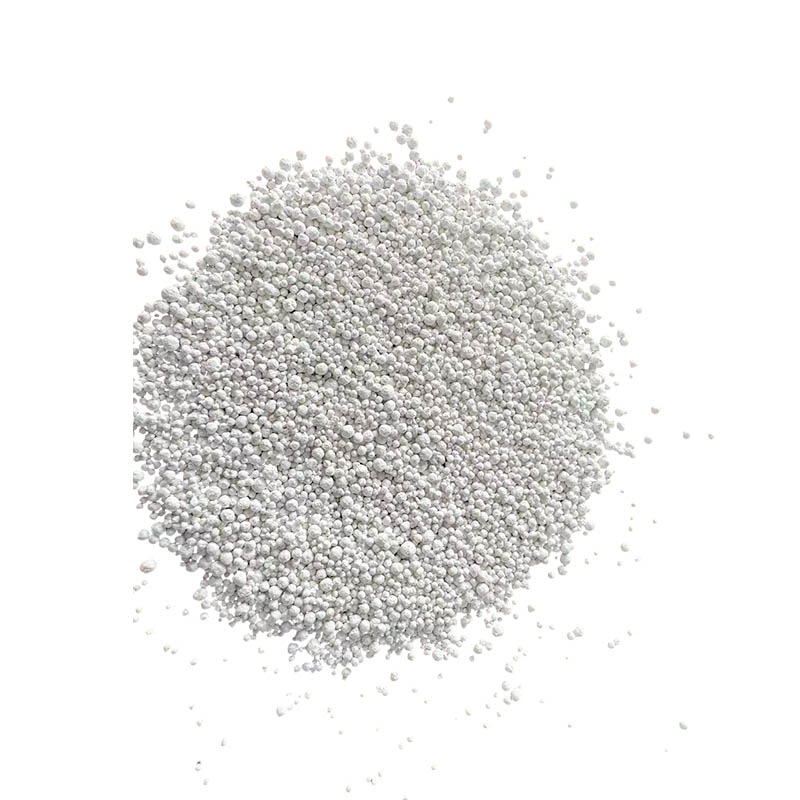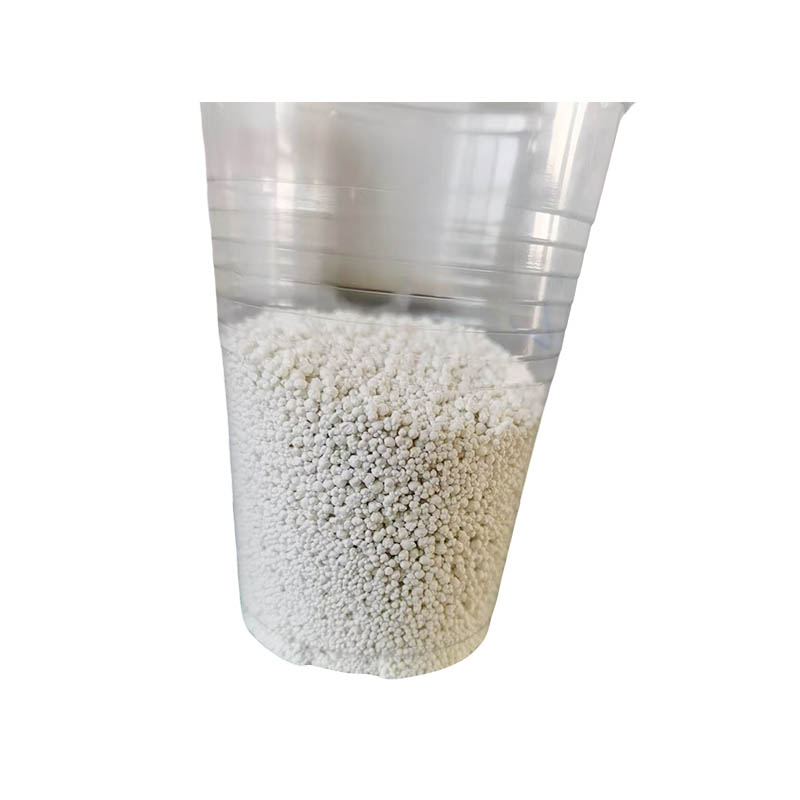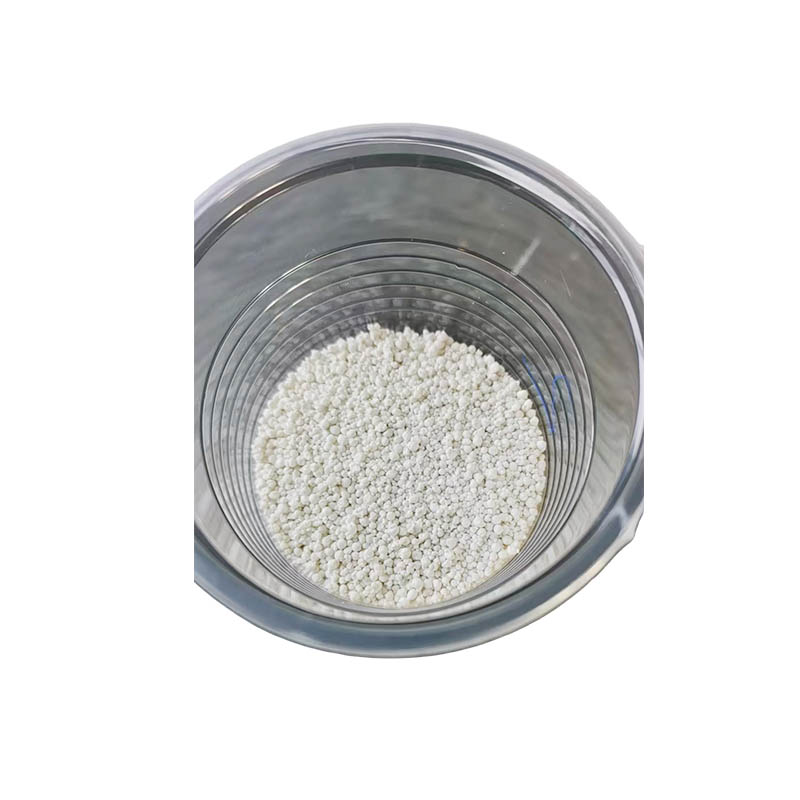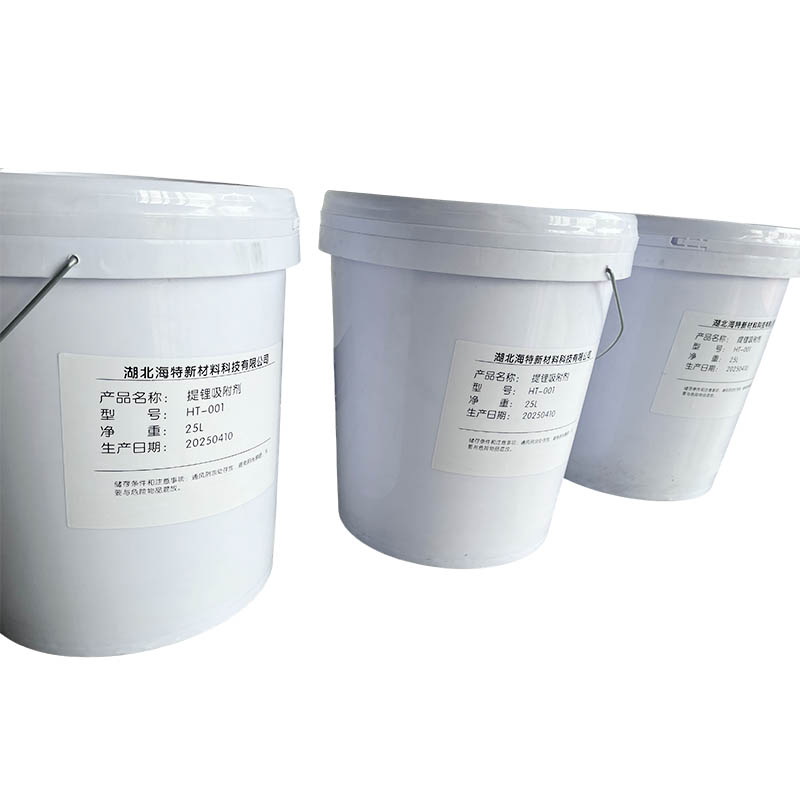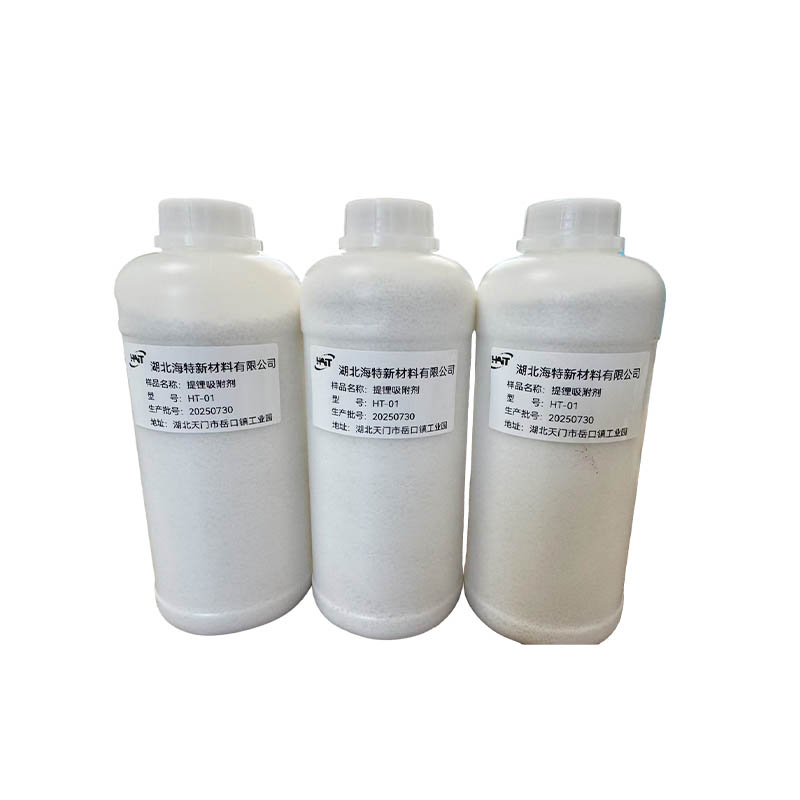Lithium Extraction Adsorbent
HT-001
Our company has introduced advanced foreign technology to produce lithium-extraction adsorbents, using new nanomaterials, composite porogens and special granulation processes. The product has a regular appearance, large specific surface area, high selectivity, and significantly improved performance. Under the same conditions, the adsorption capacity is about 55% higher than that of similar products. At the same time, the product is easy to elute, has a high resolution rate, a low dissolution rate, and good durability. The product performance has achieved a qualitative leap.
1. Pretreatment
To ensure that trace oligomers and impurities introduced during the loading process are completely removed from the new adsorbent and do not affect product quality, the following pretreatment procedures should be performed before formal use.
▶Backwash: After loading the adsorbent, first backwash with clean water (or in a dedicated adsorbent treatment tank) at a flow rate of 7-10 BV/h (bed volume/hour) and a 70% backwash expansion rate to remove impurities and fine particles. This process should continue until the backwash effluent is clear. This process takes approximately 0.5 hours.
▶Soak: Stop backwashing, lower the liquid level to 20 cm above the highest point of the adsorbent bed, and soak for approximately 2 hours to allow the adsorbent to settle fully.
Forward Wash: Finally, rinse the bed with deionized water at 3-4 BV/h. This process takes approximately 3-5 hours.
2. Single Column Test
A certain volume of adsorbent (V, mL) was loaded into the exchange column. A certain volume of brine (V, L) was then flowed through the column at a controlled rate (C, mg/L) at 0.5-3 BV/h. The effluent was collected and the lithium concentration at the column outlet was monitored. After adsorption equilibrium was reached, feed was stopped. The volume of adsorbed tail brine (V, L) was measured, and the mixed lithium concentration of the tail brine (C, mg/L) was measured.
3. Displacement
The liquid level was lowered to the level of the highest point of the adsorbent layer. The remaining brine was displaced with low-calcium-magnesium lithium brine at 2 BV/h. A measured volume of displaced brine (V2, L) was collected over 0.5 hours, and the lithium concentration of the displaced brine (Cz, mg/L) was measured. 4. Elution
Use deionized water to elute the adsorbent bed in the downstream direction at 2BV/h, which takes about 5-10 hours (it is recommended to take samples every hour to monitor the ion concentration). When the lithium concentration of the eluent is lower than the design requirement, stop elution, measure the total volume of the eluent V3 (L), and detect the mixed lithium concentration C. (mg/L) of the eluent.
Note:
The following reasons may cause the increase in the amount of lithium leakage in the effluent and the decrease in the periodic elution volume. Users can find the reasons by comparing the following situations.
▶1. Increased lithium leakage in the effluent or low adsorption capacity
(1) The new resin is not pretreated as required, and lithium residues in the pores affect the adsorption effect.
(2) The inlet and outlet valves are leaking, and the inlet water leaks into the outlet water. Check the tightness of the valves.
(3) The adsorption flow rate is too fast, the contact time with the adsorbent is insufficient, and the exchange is not complete. Adjust the adsorption flow rate to the normal value.
(4) Check whether the adsorbent is leaking. Control the balance of the inlet and outlet water flow and maintain the water level in the adsorption column.
▶ 2. Reduced elution volume during the cycle
(1) Insufficient elution volume, not reaching the standard of 10-20BV.
(2) The elution water quality is too poor or the salt content is too high. The quality of the elution water should be improved.
(3) The elution time is too short, lithium does not have enough time to desorb, and the elution time should be strictly controlled.
(4) The adsorbent agglomerates, the adsorption effect is poor, and bias flow occurs, resulting in poor regeneration effect. Strengthen the backwash effect and control the appropriate backwash expansion rate and backwash time.
▶ 3. Continuous desorption adsorption volume and yield are too low
(1) The adsorption flow and time settings are unreasonable, the flow rate is too fast, and the switching time is too short.
(2) The series and parallel mode is unreasonable.
(3) The elution flow setting is too fast, the front period is too long, and the distribution is unreasonable.
Project Name | index |
Model | HT-001 |
Appearance | Milky white; spherical particles |
Lithium adsorption rate (%) | ≥90 |
Bulk density (g/ml) | 0.70-0.85 |
Expansion rate (%) | 6-13 |
Functional groups | Lithium-ion nanocrystals |
Project Name | Adsorption layer height | Operating flow rate (BV/H) | Annual loss rate | Operating temperature (℃) |
Numerical | ≥600 | 2-15 | ≤5.0 | ≤70 |
